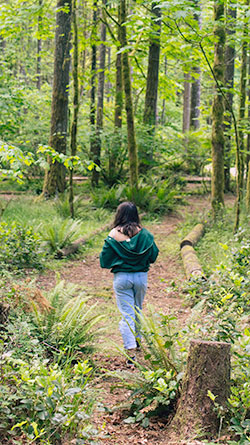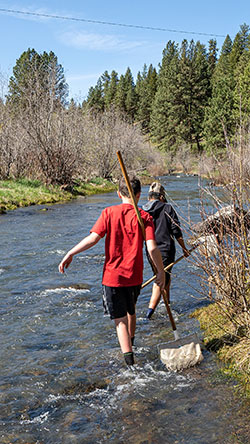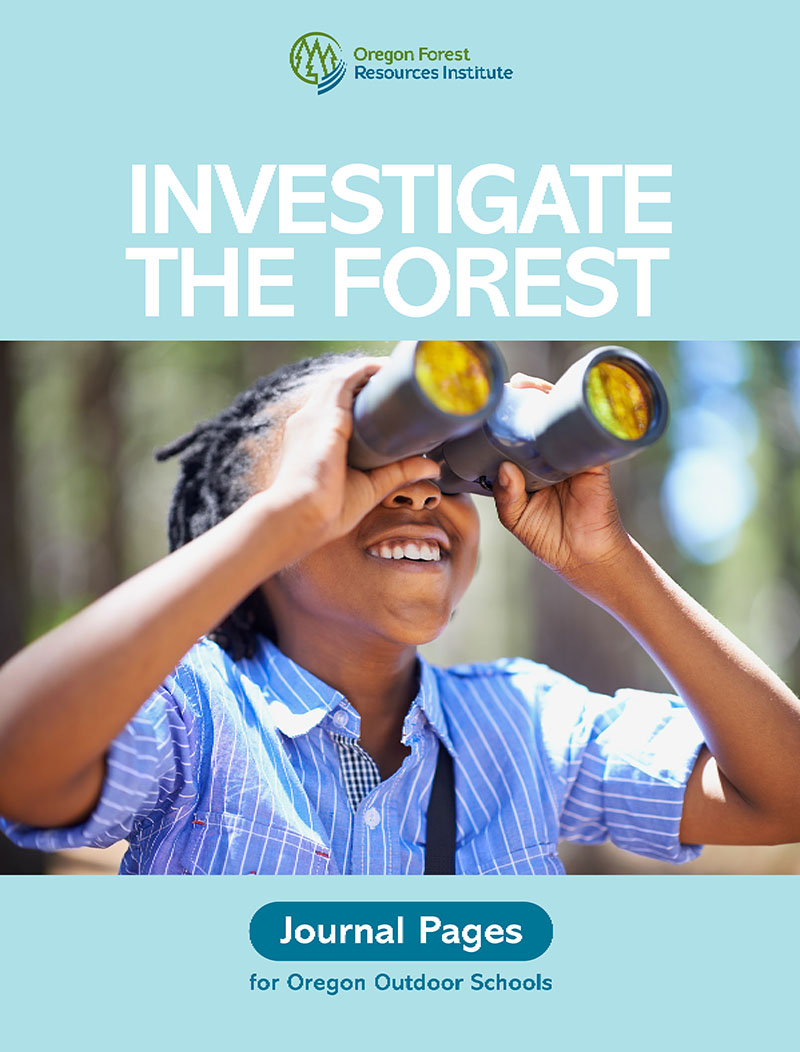In Oregon, forests are the setting and backdrop for many Outdoor School programs. Using forests as a living laboratory engages students in profound ways. It not only helps connect them to classroom learning, but also gives them concrete, on-the-ground experiences they can draw on throughout their lives.
These Investigate the Forest journal pages are intended to guide students in learning about Oregon’s forests while they explore the outdoors. They offer hands-on, student-centered ways to study the forest or other natural environments just outside their door. The journal pages may be used before, during or after attending an Outdoor School program to enhance students’ understanding of Oregon’s forests as they explore the outdoors. Feel free to select the journal pages that enhance your program goals and are suitable for your setting.
Two Types of Trees
Students compare the leaves and reproductive structures of broadleaf and conifer trees.
Identifying Trees
Using the provided key, students try to identify a particular forest tree.
Forest Site Study
Students rate the presence of shade, animals and soil wetness in a forest site.
Which Trees?
Given tolerances of different trees, students use their Forest Site Study results to decide which species might thrive at their site.
How Wide?
Students compare two different methods to measure the width of a tree’s trunk.
How Tall?
Using a ruler and simple math, students estimate the height of a tree.
How Old Is Your Tree Cookie?
By counting the growth rings on their tree cookie nametag, students estimate its age.
Forest Hoop Survey
Students conduct a microhabitat survey using a hula hoop as the site’s boundary.
Signs of Wildlife
Focusing on different layers of the forest, students look for evidence of forest wildlife.
Wildlife Habitat
Students inspect a site for evidence of how wildlife meet their needs for food, water, shelter and living space.
Track Math
Students learn how to distinguish different animal tracks by counting the toes and claws on the front and back feet.
Tracking
Students search for animal tracks and sketch one they find.
Decomposer Bingo
Pictures of decomposers in a bingo format guide students in exploring a forest site.
The Food Chain Story
A writing prompt and graphic organizer direct students in crafting a food chain story involving forest plants and animals.
Forest Benefits Scavenger Hunt
Students search for evidence of the environmental, economic, and social benefits of forests.
Likin’ Lichens
Students survey an area for crusty, leafy, and shrubby lichens.
Assessing Air Quality
Students measure lichens and use their results from Likin’ Lichens to assess the air quality of a site.
How Much Carbon?
Using the Tree Carbon Tape, students find the carbon dioxide equivalent (CO2e) of five different trees. Includes a reusable tool for estimating a tree’s C02e.
First Foods of Oregon
Students look for evidence of traditional local foods that have nourished Indigenous people of Oregon since time immemorial.
Forest Products Scavenger Hunt
Students try to find as many products as possible that come from Oregon’s forests.
Invasive or Not?
Based on characteristics shared by many invasive plant species, students assess whether a given plant is invasive.
Detecting Past Forest Fires
Students look for evidence of past fires in a forest area.
Preventing Wildfire
Students identify ways that they can help to prevent wildfires.
Climate Change and Forests
Students create a diagram showing how climate change and forests affect each other.
Forest Management
Students make comparisons between managed and unmanaged forest areas.
Your Forest Plan
Students name a goal and create a forest management plan for an imaginary forest.
Sustainable Forestry Careers
After identifying what they would and wouldn’t like about working outdoors, students consider different forest careers.



